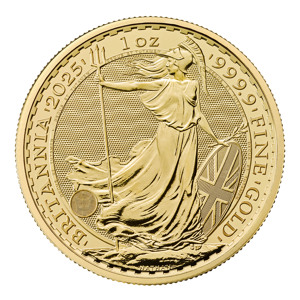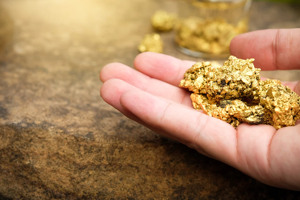Tavex uses cookies to ensure website functionality and improve your user experience. Collecting data from cookies helps us provide the best experience for you, keeps your account secure and allows us to personalise advert content. You can find out more in our cookie policy.
Please select what cookies you allow us to use
Cookies are small files of letters and digits downloaded and saved on your computer or another device (for instance, a mobile phone, a tablet) and saved in your browser while you visit a website. They can be used to track the pages you visit on the website, save the information you enter or remember your preferences such as language settings as long as you’re browsing the website.
| Cookie name | Cookie description | Cookie duration |
|---|---|---|
| tavex_cookie_consent | Stores cookie consent options selected | 60 weeks |
| tavex_customer | Tavex customer ID | 30 days |
| wp-wpml_current_language | Stores selected language | 1 day |
| AWSALB | AWS ALB sticky session cookie | 6 days |
| AWSALBCORS | AWS ALB sticky session cookie | 6 days |
| NO_CACHE | Used to disable page caching | 1 day |
| PHPSESSID | Identifier for PHP session | Session |
| latest_news | Helps to keep notifications relevant by storing the latest news shown | 29 days |
| latest_news_flash | Helps to keep notifications relevant by storing the latest news shown | 29 days |
| tavex_recently_viewed_products | List of recently viewed products | 1 day |
| tavex_compare_amount | Number of items in product comparison view | 1 day |
| Cookie name | Cookie description | Cookie duration |
|---|---|---|
| chart-widget-tab-*-*-* | Remembers last chart options (i.e currency, time period, etc) | 29 days |
| archive_layout | Stores selected product layout on category pages | 1 day |
| Cookie name | Cookie description | Cookie duration |
|---|---|---|
| cartstack.com-* | Used for tracking abandoned shopping carts | 1 year |
| _omappvp | Used by OptinMonster for determining new vs. returning visitors. Expires in 11 years | 11 years |
| _omappvs | Used by OptinMonster for determining when a new visitor becomes a returning visitor | Session |
| om* | Used by OptinMonster to track interactions with campaigns | Persistent |
| Cookie name | Cookie description | Cookie duration |
|---|---|---|
| _ga | Used to distinguish users | 2 years |
| _gid | Used to distinguish users | 24 hours |
| _ga_* | Used to persist session state | 2 years |
| _gac_* | Contains campaign related information | 90 days |
| _gat_gtag_* | Used to throttle request rate | 1 minute |
| _fbc | Facebook advertisement cookie | 2 years |
| _fbp | Facebook cookie for distinguishing unique users | 2 years |
China Gold Purchases Fall 11% as Higher Prices Deter Buyers

China, one of the world’s largest consumers of gold, witnessed an 11.2% year-on-year drop in gold consumption during the first three quarters of 2024. From January to September, the total gold consumed reached 741.732 tons, according to the China Gold Association.
This decline comes amidst rising gold prices in the short term and long term, which have kept many potential buyers, particularly those interested in jewellery and buying gold bullion, at bay.
Jewellery Demand Takes a Sharp Hit

Gold jewellery, which accounts for over half of China’s total gold consumption, experienced a marked decline this year.
Jewellery demand fell by 27.5% compared to the previous year, amounting to 400.038 tons
The increase in gold prices – driven by factors like economic uncertainty and geopolitical tensions – has led to a significant reduction in consumer spending on jewellery.
Despite this slump, smaller gram jewellery sales have gained some traction, thanks to new e-commerce methods, including live streaming and instant retail. These platforms have facilitated easier access to small, more affordable pieces, partially offsetting the overall decline in jewellery demand.
Rising Gold Prices and Their Impact

Gold prices have surged by over 30% since the beginning of the year, reaching unprecedented levels and new all time highs. This rise has been attributed to investor expectations of rate cuts and ongoing geopolitical tensions, for example in the middle east.
In early October, the December gold futures contract on the COMEX exchange reached a record high of $2,772.60 per ounce, further deterring consumers from purchasing gold items at these inflated prices.
The China Gold Association noted:
“In the first three quarters, the price of gold continued to rise, and the consumption of gold jewellery was significantly affected.”
Industrial Use Also Declines
The impact of high gold prices extended to industrial usage. The he year-on-year consumption of gold for industrial and other applications falling by 2.8% to 58.973 tons during the same period.
Domestic Gold Production Sees Modest Decline

China’s domestic raw gold output saw a slight decrease as well, reaching 268.068 tons between January and September – a decrease of 3.180 tons compared to the same period last year.
Of this total, 209.710 tons came from gold mines, while 58.358 tons were obtained from non-ferrous by-products
However, production from imported raw materials increased by 15.3% in this time period, resulting in a total output of 379.275 tons when factoring in this imported gold, reflecting a 3.2% year-on-year increase.
Increased Trading Volumes and ETF Holdings
Despite reduced consumer consumption, gold trading volumes surged on the Shanghai Gold Exchange, where bilateral trading volumes of all gold varieties reached 46,500 tons, up by 47.5% year-on-year.
Meanwhile, China’s gold exchange-traded fund (ETF) holdings grew by nearly 49%, reaching 91.39 tons by the end of September. This growth in trading volumes and ETF holdings highlights investors’ renewed focus on investing in gold bullion and gold investments as a hedge against global economic instability.
The Outlook for Gold Consumption in China and Beyond
As geopolitical issues persist and the global economic recovery remains sluggish, the demand for gold as a safe-haven asset is expected to remain strong among investors.
This trend may continue to impact retail gold demand in countries like China and India, where the price sensitivity of buyers remains high.

















